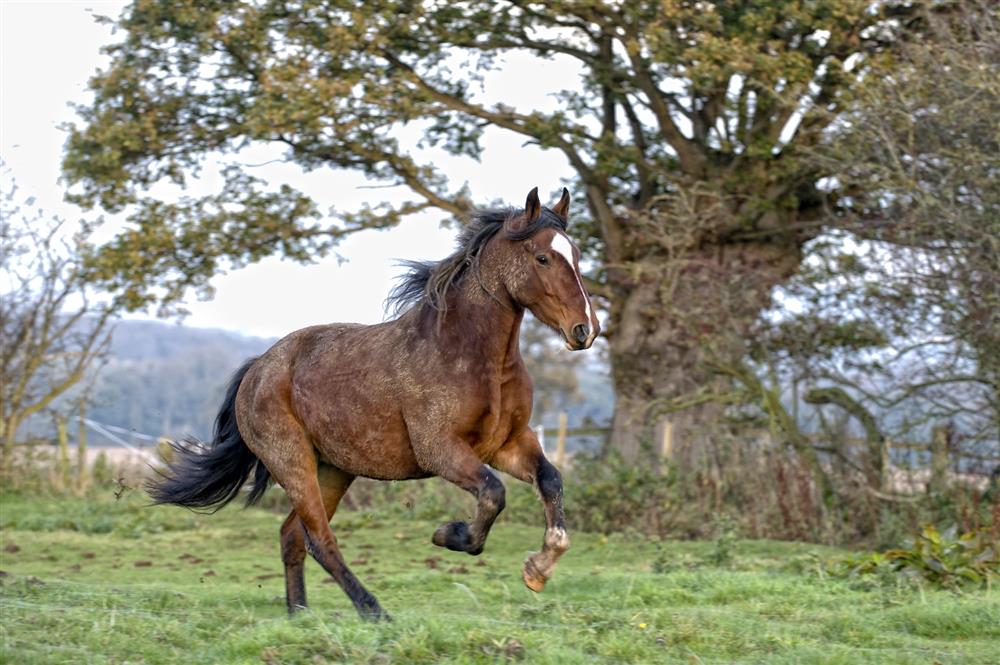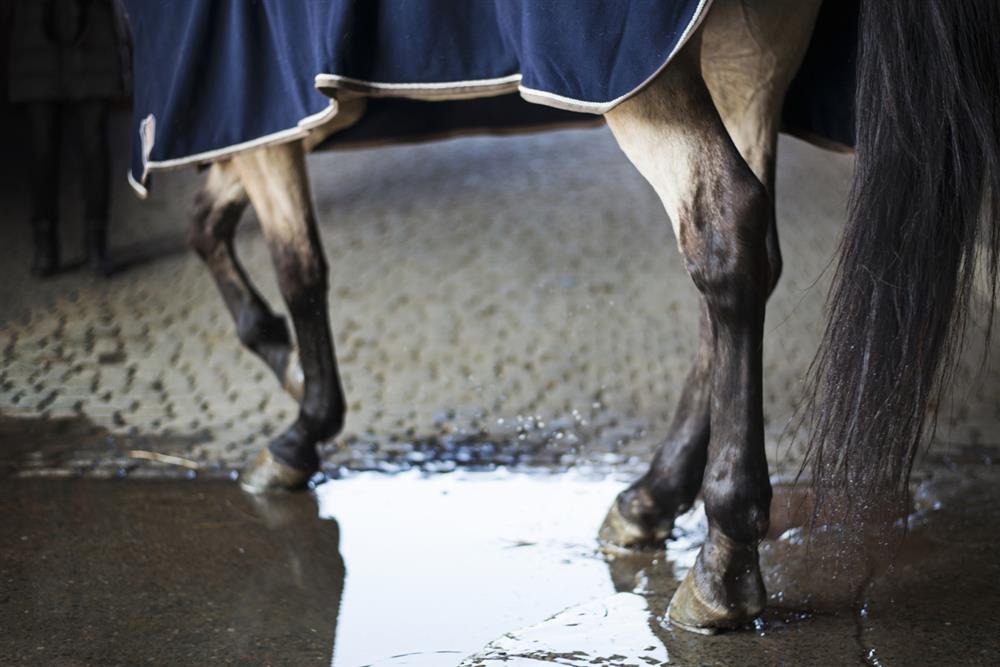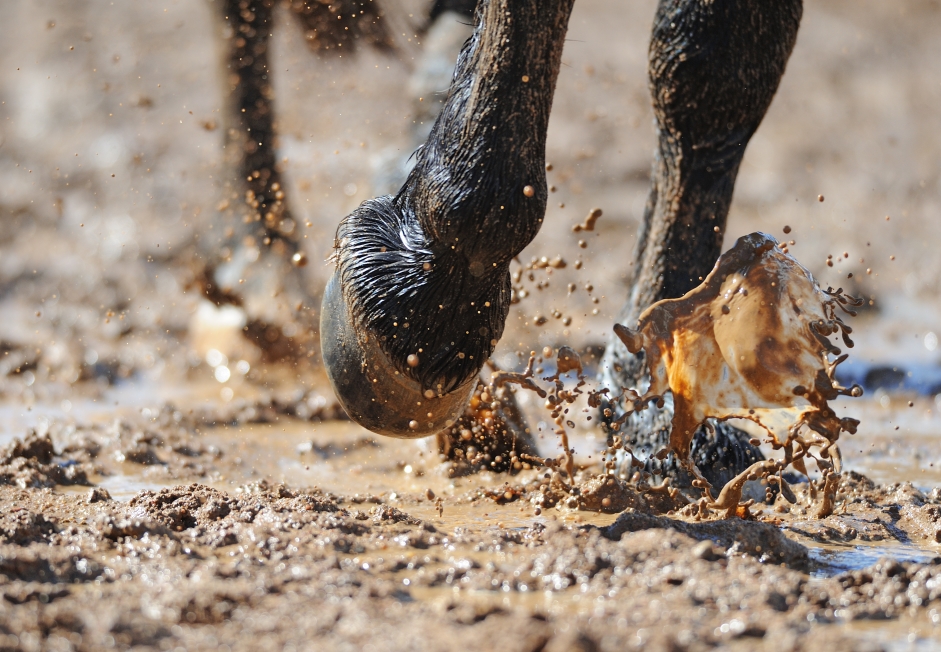I can’t include a sound effect with this blog, so please imagine a cross between the theme from Jaws and the gloopy sound when you lose a wellie boot in wet ground.
That’s right – it’s the season to be concerned about mud fever.
Before your eyes, that smart, sleek summer pony will metamorphose into a beast from forty thousand fathoms, the mud monster! His mud-encrusted coat/rug will resemble something a Dr Who special effects technician would be proud of creating and as for his legs…let’s not go there.

Unfortunately, mud can be more than a nuisance. If your horse or pony suffers from mud fever, you’ll have to decide whether to clip his legs. For owners who want to keep their animals’ leg hair long, there will also be the question of whether to wash off wet legs or leave them to dry before brushing off dried mud.
That’s when the feathers fly, in more ways than one. I’ve collated opinions and come to the not-at-all-scientific conclusion that different methods work for different scenarios, depending on soil type. If you’re waiting for wet clay soil to dry out on a hairy-legged animal, good luck; if you keep him on sandy or peat soil, it might be easier.
There are advocates for both sides of the washing versus leaving debate. I’m on the side of hosing with cold water, then drying afterwards. If you use a towel, blot rather than rub; some owners follow this with a hairdryer, though be prepared to desensitise a horse to this rather than blasting him with warm air without warning.

Don’t feel sorry for your horse and wash off his legs with warm water. For a start, his resistance to cold is better than yours. More important, warm water will open the pores of the skin.
It used to be thought that mud fever was caused solely by Dermatophilus congolensis bacterium, but vets now say that there are several factors which can help it take hold. The slightest amount of skin damage, such as a scratch or a rub, can enable bacteria to enter and researchers who have cultured bacteria from mud fever lesions have found other species besides D. congolensis.
As with so many conditions that are so common they are taken for granted, but which can be a nightmare to deal with, there are enough questions and pitfalls to prompt a script for a disaster movie. For example…
- You’re going to be out for a few hours in muddy conditions and will be jumping, or simply riding a horse who is unbalanced and/or likely to get excited. Do you put protective boots on him, or risk mud and dirt becoming trapped between the boot and his leg, predisposing him to rubbed skin?
- You school in an arena which has a high sand content and presents a similar risk.
- Your vet wants you to stable your horse part of the time – or in a bad case, keep him in 24/7 for a few days – to allow the affected areas to remain dry, and be treated. Said horse lives out all the time and isn’t impressed.
- You need to clip your horse’s legs to allow treatment, but he’s not having those clippers anywhere near his sore limbs, thank you very much.
The best tactics are to plan ahead, make a risk assessment and take veterinary advice. If necessary, ask your vet to sedate your horse and clip the affected area.

A balanced diet which helps promote healthy skin, hair and hooves – which may include appropriate supplements – is essential. Sometimes, what you put on the inside is as important as what you do to the outside.
Yes, I do mean ask your vet to do the clipping. That’s not a twisted form of revenge; you’ll be more use watching the horse’s reactions. Having said that, the vet’s reactions may also need to be pretty sharp.
You might still end up with a mud monster, but hopefully your biggest problem will be cleaning him up sufficiently to ride. And if you have any incriminating pictures, do share them here…

